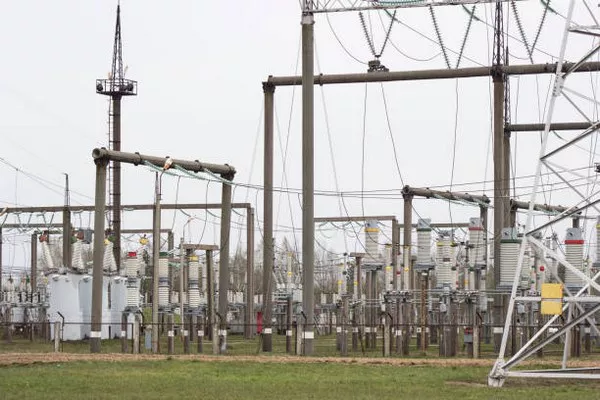In the realm of electrical engineering, few inventions have had as profound an impact as the electrical transformer. This device, fundamental to modern power distribution systems, revolutionized the way electricity is transmitted, distributed, and utilized across vast distances. Its invention marked a pivotal moment in the history of technology, paving the way for the widespread adoption of electric power in industrial, commercial, and residential applications.
Early Challenges in Electrical Distribution
The late 19th century witnessed a rapid expansion in the use of electricity, driven by innovations in electrical generation and transmission technologies. However, early electrical systems faced significant challenges, particularly in the efficient transmission of power over long distances. Direct current (DC) systems, championed by figures like Thomas Edison, were limited in range due to substantial energy losses over extended transmission lines. This limitation spurred the search for an efficient method to transform voltage levels, facilitating long-distance power transmission without excessive loss.
The Birth of the Transformer Concept
The concept of electrical induction, discovered by Michael Faraday in the early 1830s, laid the theoretical groundwork for transformers. Faraday’s experiments demonstrated that an electromotive force could induce current flow in a nearby conductor through the principle of electromagnetic induction. Building on Faraday’s work, pioneering scientists and engineers began exploring ways to apply this principle to electricity distribution.
Early Experiments and Development
One of the key figures in the early development of the transformer was Hungarian engineer Ottó Bláthy. In the 1880s, Bláthy, working at the Ganz company in Budapest, conducted experiments with alternating current (AC) systems and transformers. His work, alongside that of colleagues Miksa Déri and Károly Zipernowsky, led to the creation of the first operational transformer in 1885. This device was capable of stepping up or stepping down AC voltages, demonstrating the practical application of electromagnetic induction in power distribution.
Industrial Applications and Advancements
The successful development of transformers quickly gained attention in the industrial world. AC systems, utilizing transformers for voltage regulation and distribution, began to replace DC systems in many applications due to their efficiency over longer distances. The introduction of transformer substations allowed for the centralized generation of electricity at higher voltages, which could then be stepped down for local distribution, minimizing transmission losses and improving overall system efficiency.
Key Innovations and Technological Progress
Throughout the late 19th and early 20th centuries, advancements in transformer design and manufacturing techniques continued to improve efficiency and reliability. Engineers focused on refining core materials, enhancing insulation, and developing more precise winding techniques to optimize performance. These efforts were crucial in scaling up electrical grids to meet the growing demand for electricity from industries, cities, and rural areas alike.
Impact on Power Distribution Networks
The widespread adoption of transformers fundamentally reshaped power distribution networks worldwide. By enabling the efficient transmission of electricity over long distances at higher voltages, transformers played a vital role in the expansion of electrification. They facilitated the development of interconnected grids capable of supplying electricity reliably to homes, businesses, and industries across vast geographic areas.
Technological Evolution and Global Adoption
As electricity became increasingly integral to modern life, the demand for more advanced and specialized transformers grew. Innovations in transformer design continued throughout the 20th century, driven by the need for higher efficiency, increased power handling capacity, and compatibility with evolving electrical systems and equipment. These advancements allowed for the development of ultra-high voltage transmission systems, further extending the reach and reliability of electrical grids worldwide.
Modern Applications and Future Developments
Today, transformers remain indispensable components of electrical infrastructure, supporting diverse applications ranging from household appliances to industrial machinery and renewable energy systems. The advent of smart grid technologies and digital monitoring systems has further enhanced the efficiency and resilience of power distribution networks. Ongoing research focuses on improving transformer materials, reducing environmental impact, and integrating transformers into emerging energy storage and distribution technologies.
See Also OLD TRANSFORMERS: PRACTICES FOR DISPOSAL, RECYCLING & REUSE
Conclusion
The invention of the electrical transformer stands as a testament to human ingenuity and innovation in the field of electrical engineering. From its humble beginnings in the late 19th century to its pivotal role in shaping modern electrical systems, the transformer has enabled the efficient transmission and distribution of electricity on a global scale. As we look towards the future, continued advancements in transformer technology promise to further enhance the reliability, efficiency, and sustainability of electrical power networks, ensuring that electricity remains a cornerstone of modern civilization.
In summary, the journey from the theoretical principles of electromagnetic induction to the practical realization of the electrical transformer exemplifies how scientific curiosity, engineering expertise, and industrial necessity converge to create transformative technologies that redefine our world.

